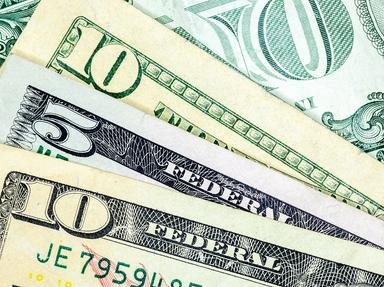Quiz Answer Key and Fun Facts
1. Colonial Notes were first issued in 1690 by which of the original thirteen colonies?
2. In 1775 the Continental Congress issued currency to finance the revolution. What phrase arose with its issuance?
3. In 1785 the United States officially adopted the dollar sign. From what currency in use in the colonies in the 18th century was the dollar sign derived?
4. In 1791 which Founding Father established the Bank of the United States?
5. In 1862 the Treasury Seal made its first appearance on U.S. currency. These were the first $1 "legal tender" notes. Whose portrait appeared on these notes?
6. In 1913 the Federal Reserve became the nation's central bank. The newly established Federal Reserve Board begins to issue Federal Reserve Notes. Whose portrait appeared on the first $10 Federal Reserve Note in 1914?
7. In 1914 the Federal Reserve issued currency in $10,000 denominations.
8. In 1861 what other identifier was added to U.S. currency that still appears today?
9. Up to 2022, whose was the only actual female portrait to have appeared on a U.S. banknote?
10. The reverse of $10 Federal Reserve notes issued between 1928 and 1996 show a depiction of the U.S. Treasury Building. What was added to the image between those years?
Source: Author
ncterp
This quiz was reviewed by FunTrivia editor
stedman before going online.
Any errors found in FunTrivia content are routinely corrected through our feedback system.
